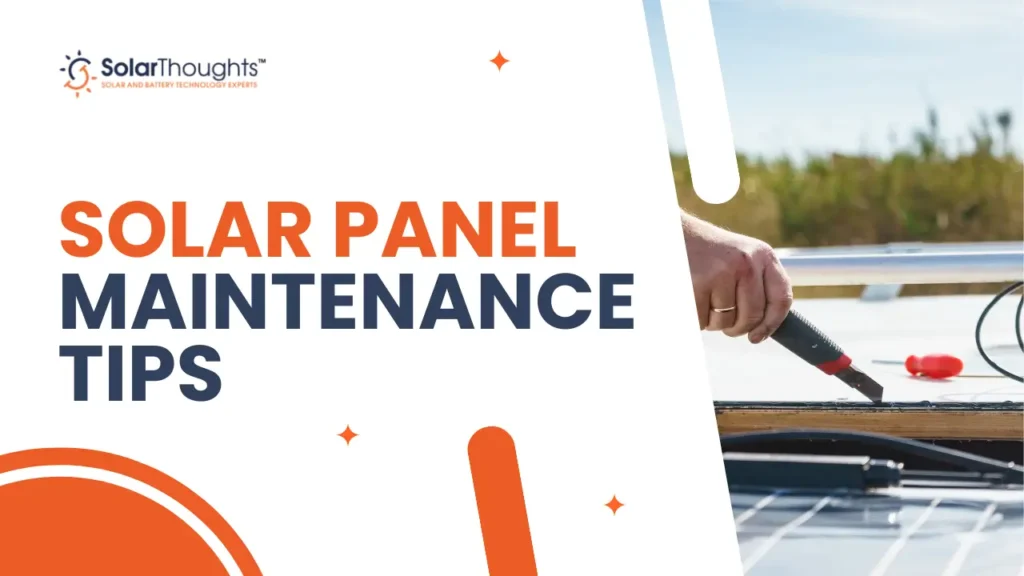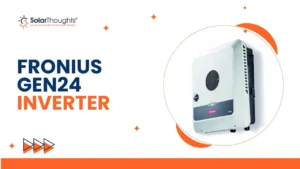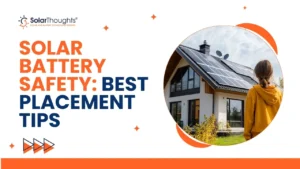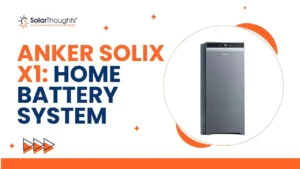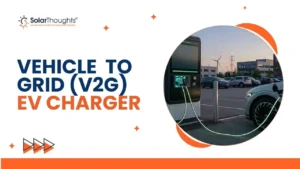Consider your solar panels as quiet guardians that convert sunlight into savings continuously. But, even these advanced features require support to perform at their best. It does not matter if you are experienced with solar energy or just starting out in the renewable power movement, knowing the most important maintenance advice for solar panels can make a big difference between having an unimpressive system and one that operates like a well-oiled machine. From increasing energy production to lengthening the life of your setup, correct upkeep is not solely about safeguarding what you have put into it but also ensuring you give maximum input towards creating a sustainable future. In this ultimate guide, we will reveal the hidden wisdom of keeping your solar panels at the best condition. You can explore all things, from basic cleaning ways to high-level monitoring methods. Are you prepared to increase your solar savings? Let’s jump into the realm of solar panel maintenance Tips and see how a little maintenance can result in more green – for both your budget and the environment.
Table of Contents
ToggleWhy Solar Panel Maintenance Matters
Solar panels are a significant investment in sustainable energy, and proper maintenance is crucial for several reasons:
- Increase Efficiency: Make sure your panels are clean and well taken care of, as dirty or damaged ones capture sunlight less efficiently. Even a thin layer of dust can affect the output.
- Longer Lifespan: Regular care can make your solar panels last much longer than their warranty time. Usually, most panels are made to work for 25-30 years but with good upkeep, they will keep giving efficient performance even after this period.
- Early Problem Detection: Similar to how we check our bodies and fix small problems before they turn into big ones, routine checks can identify and handle issues before they become costly repairs. Small problems, if not checked often, may escalate into significant issues that could need expensive replacements.
- Warranty Compliance: Several warranties demand steady maintenance for their continuation. If you do not keep up with the upkeep of your panels, it might cancel out your warranty and put you at risk of unforeseen expenses.
- Return on Investment: This phrase means that you are making the most from your first spending by ensuring ongoing energy savings with well-maintained panels.
Now, let’s dive into our top solar panel maintenance tips to keep your system running smoothly.
Essential Solar Panel Maintenance Tips for Peak Performance
1. Regular Cleaning: The Foundation of Solar Panel Care
One of the most important solar panel maintenance tips is to keep your panels clean. Dust, dirt, pollen, bird droppings, and other debris can significantly reduce your panels’ efficiency.
- Frequency: Clean your panels every half year, or more often if near a dusty place or trees. For locations with much pollution or bird presence, cleaning monthly could be required.
- Timing: Early morning or evening is the best time to prevent working with hot panels. Cleaning cool panels also lessens the chance of thermal shock, where cold water hitting hot glass can cause damage to it.
- Method: Use water and a brush or sponge. Water can handle most cleaning tasks alone, but if soap is necessary, select a gentle type that doesn’t cause abrasion then rinse well so no residue remains behind.
- Equipment: A brush that is soft and has a long handle, a squeegee with plastic blade on one side and cloth-covered sponge on the other side, good sprayer or hose having right nozzle are ideal tools to clean solar panels.
- Safety is a Priority: If your panels are on the roof, think about getting professionals to clean them. Working on a roof can be risky, especially when water comes into play. If you choose to carry out this task yourself, make sure you wear suitable safety gear such as a harness and shoes that have anti-slip properties.
- No Hard Water: If you reside in a region where hard water is common, it’s advisable to use distilled or de-ionized water for cleaning so as to avoid mineral build-ups on the panels.
2. Visual Inspections: Catching Problems Early
Regular visual inspections can help you spot potential issues before they escalate:
- Check for physical damage: Examine the panels thoroughly to see if they have any cracks, chips or changes in color. Even a tiny crack can create big problems for performance and needs quick attention.
- Check the frame: Confirm that it’s firmly fixed and without corrosion. Observe any indications of water harm or rust, particularly at connection spots.
- Examine the wiring: Inspect for any wires that are uncovered or harmed. Rodents have a tendency to bite through wires, so check if there are hints of pest movement.
- Performance monitoring: Watch out for sudden decreases in energy production. Many systems now have monitoring software that can notify you of performance problems.
- Verify seals: Examine the seals along borders of panels and junction boxes. If these have become bad, moisture may enter and lead to short circuits.
- Find hotspots: If it is safe, check your panels in a sunny day when they are making electricity. Any spots that feel particularly hot might show issues with one cell or panel.
3. Trim Nearby Trees: Maximize Sun Exposure
Overhanging branches can cast shadows on your panels, reducing their efficiency:
- Cutting down trees that are close to the solar panels will help them get more sunlight. Even a small amount of shade can make a panel produce less power than it is supposed to.
- Think about tree maintenance with regard to the changes in sun angle during each season. A tree that does not cover your panels from sunlight during summer could cast shadows in winter when the sun is at a lower angle.
- If possible, avoid trimming during nesting seasons for local birds.
- In certain places, there could be limitations on trimming trees, specifically for safeguarded types. Always confirm the regulations in your area before you start significant tree tasks.
4. Monitor System Performance: Stay Informed
Many modern solar systems come with monitoring software. Make use of it!
- Keep a record of daily, monthly and yearly production for finding patterns or sudden alterations. You can usually see this information shown in simple graphs and charts with most monitoring systems.
- Measure your production against last year or other similar systems in the area. This can help you see if your system is not reaching its full potential.
- Arrange for alerts about notable performance declines. Numerous systems have the ability to transmit notifications to your phone or email if production is not meeting anticipated levels.
- Grasp the influence of weather: Understand how various weather situations can affect your system’s functioning. This knowledge will assist you in distinguishing between regular changes and genuine issues.
- Check each panel’s performance: If your system permits it, observe the output of every panel. This may assist in recognizing if a certain panel is not functioning well and requires assistance.
5. Professional Inspections: Expert Eyes on Your Investment
While DIY maintenance is important, professional inspections provide a deeper level of care:
- Arrange yearly inspections with skilled solar technicians who possess the necessary knowledge and tools for conducting comprehensive checks, surpassing what can be achieved through a simple visual examination.
- They can inspect inverter function, wiring integrity and panel degradation. Inverters are complex components that require professional evaluation.
- Instruments detect problems that are unseen by the eyes. For instance, thermal imaging cameras can find hotspots or dead cells that might not be visible in a visual check.
- Electrical tests: Tests can be done by professionals to check if the electrical qualities of your system are as expected.
- System updates: This is about asking a technician if there are any improvements to the software or hardware of your system that might enhance its functionality.
6. Prepare for Extreme Weather: Protect Your Investment
Different climates present unique challenges for solar panels:
- For places with snow: Use a brush having long handle and soft bristles to eliminate build-up of snow. Do not utilize metal tools or salt, because they might harm the panels. Systems may have a setting called ‘snow mode’ that can assist in shedding snow more efficiently.
- For regions with frequent storms: Make certain that your system has good grounding and the panels are firmly fixed. You might think about setting up lightning rods to safeguard the system from electric surges when there are thunderstorms.
- In places with high temperatures: Make sure there is good ventilation around your panels so they don’t overheat. It may be surprising, but solar panels work less effectively when they are very hot – thus, it is important to have enough airflow.
- In coastal locations: Salt air has the ability to wear away components at a faster rate. This may require more regular cleaning and examination, as well as increased replacement of parts.
- In locations having strong winds: Make sure your mounting system can handle the maximum wind speeds in your area. Following extreme wind events, confirm all panels are still firmly fixed.
7. Keep Records: Document Your Maintenance
Maintaining detailed records of your solar panel care can be invaluable:
- keep track of when logs were cleaned and what methods were used. This allows you to improve your cleaning schedule and procedures as time goes by.
- Write down every repair done or new part put in. This could be very important for warranty claims and finding out about repeated problems.
- Monitor energy creation over a period: This data for extended periods can assist in identifying slow reductions in efficiency that may otherwise be overlooked.
- Preserve inspection documents from skilled technicians: They give a professional evaluation of the health of your system across time.
- Write weather events: Record notable happenings related to weather, such as hailstorms or abnormally hot days. This might help in understanding peculiarities shown within your energy production data.
- Keep a record of user guides and guarantee details for every part of your solar system.
8. Inverter Care: The Heart of Your Solar System
Your inverter is crucial for converting solar energy into usable electricity:
- Make sure the space near the inverter is not dirty and has good air flow. Dust and too much heat can decrease how long an inverter lasts and how well it works.
- Confirm often if there are error messages or warning lights. Many inverters possess a display or lights to show their condition and any problems they have.
- Know the anticipated lifespan of your inverter (usually 10-15 years) and plan for replacement. In comparison to solar panels that can last 25-30 years, inverters usually require earlier changing.
- Think about micro-inverters: If you are putting in a new system or doing an upgrade, think about using micro-inverters. They get connected to every single panel and this might enhance the whole efficiency of your system while making it simpler to detect panels that are not functioning well.
- Firmware updates: Regularly confirm if there are any firmware improvements for your inverter. These can enhance its functioning and solve possible problems.
9. Battery Maintenance (If Applicable)
If your system includes battery storage:
- Do maintenance and replacement as per the manufacturer’s guidelines. Various batteries (like lead-acid or lithium-ion) have different upkeep needs.
- Clean batteries should be stored in an environment with stable temperature. Very hot or cold conditions will greatly decrease lifespan and effectiveness of the battery.
- Frequently inspect the connections to ensure they do not have any corrosion or are not fitted in a loose manner. Corrosion and loose fittings can decrease efficiency and possibly cause safety problems.
- Battery performance check: You can observe how well your batteries are maintaining their charge. If they appear to be using up energy more swiftly than normal, this could signify the need for new ones.
- Equalization charges: Some kinds of batteries might benefit from regular equalization charges to prolong their life. Look in your battery guidebook or ask an expert if this is relevant for your system.
Read on the Pros and Cons of solar batteries
10. Stay Informed: Keep Up with Solar Technology
The solar industry is constantly evolving:
- Stay updated on new maintenance techniques and products. Innovations in cleaning technologies or new types of coatings for panels could make maintenance easier or more effective.
- Consider upgrades that might improve your system’s efficiency. New inverter technologies or more efficient panels might be worth investing in, especially if your system is older.
- Join solar energy forums or local groups to share experiences and tips. Other solar panel owners can be a great source of practical advice and local knowledge.
- Attend solar energy workshops or webinars: Many solar companies and environmental organizations offer educational events that can help you learn more about maintaining and optimizing your system.
- Follow reputable solar energy news sources: Staying informed about developments in the solar industry can help you make better decisions about your system’s maintenance and potential upgrades.
By following these solar panel maintenance tips, you can ensure your system operates at peak efficiency for years to come. Remember, a little regular care goes a long way in maximizing your return on investment and contributing to a greener future.
Conclusion: Implementing Your Solar Panel Maintenance Tips
Solar panel maintenance is not just about preserving your investment—it’s about maximizing your contribution to a sustainable future. By implementing these solar panel maintenance tips, you’re ensuring that your system continues to operate at peak efficiency, saving you money and reducing your carbon footprint for years to come. Regular cleaning, timely inspections, and staying informed about your system’s performance are key to getting the most out of your solar panels. Remember, a well-maintained solar system isn’t just good for your wallet; it’s good for the planet. As solar technology continues to evolve, so too will maintenance techniques, making it easier and more efficient to keep your panels in top shape. By staying proactive and attentive to your solar system’s needs, you’re not just maintaining equipment—you’re nurturing a cleaner, brighter future for generations to come.
Don’t let poor maintenance diminish the performance of your solar investment. Contact us today for professional solar maintenance services! Our team of experts will ensure your system is operating at peak efficiency, helping you maximize your energy savings and contribute to a sustainable future.
Schedule your maintenance check now and take the first step towards optimal solar performance! Call us at +61 478 404 414 or visit our website at SolarThoughts to book an appointment. Let’s work together to keep your solar investment shining bright for years to come!

